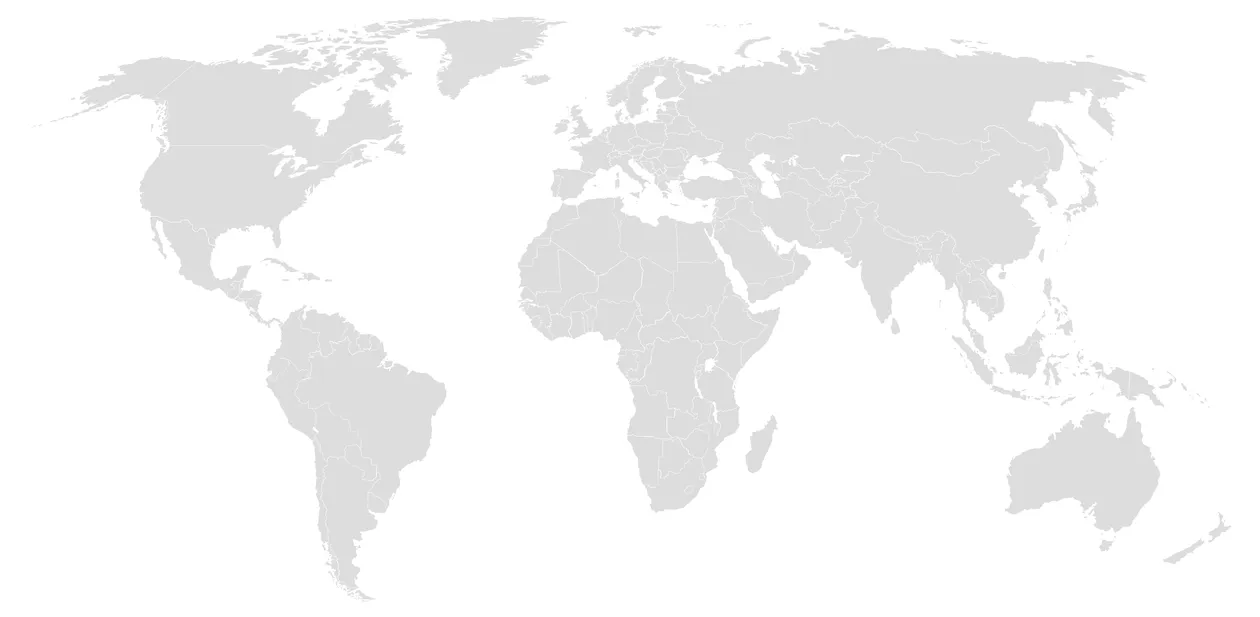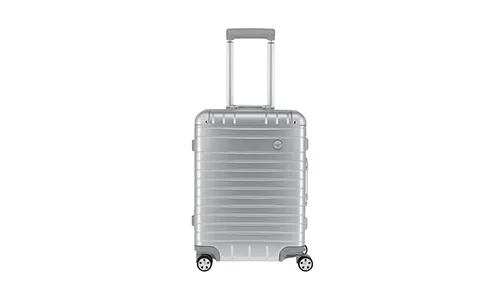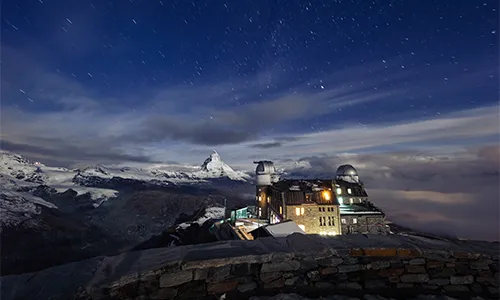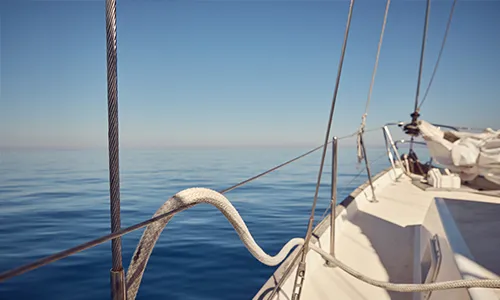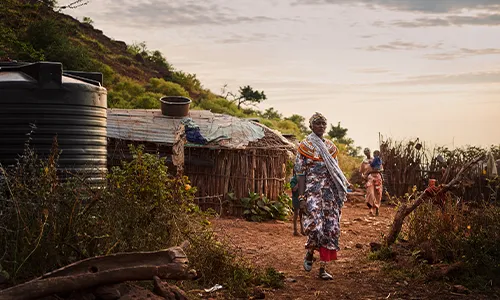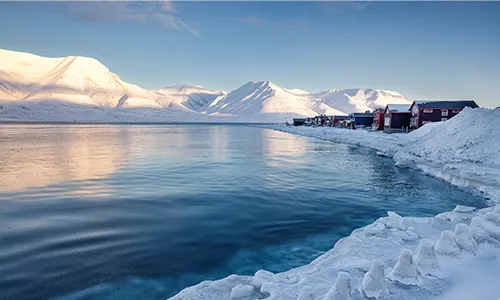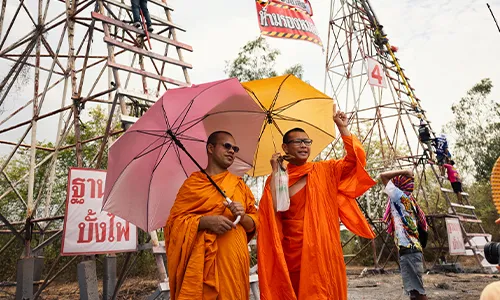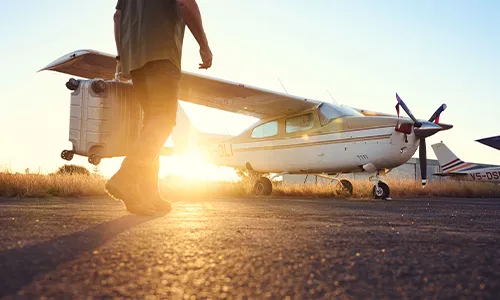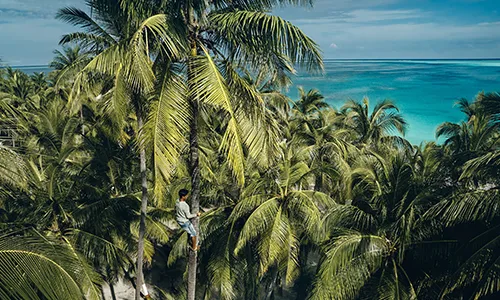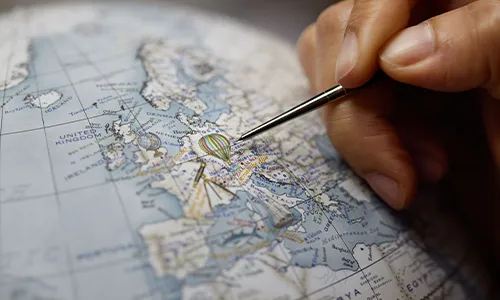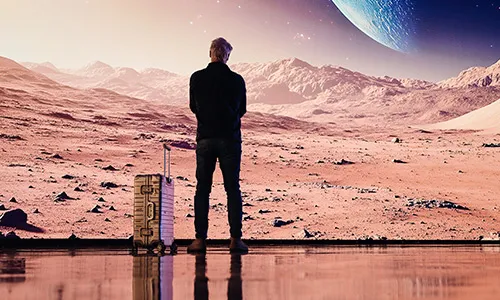Biographie trépidante :
un nouvel envol dans le désert
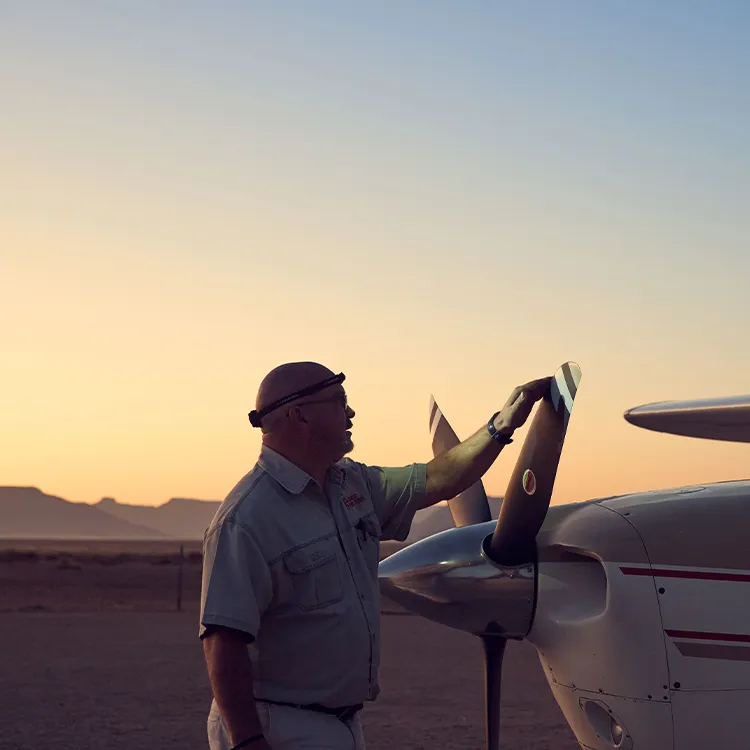
Le soleil se lève doucement sur la vallée de Windhoek. Oliver Braun, 59 ans, s’est réveillé tôt. À six heures trente, il franchit le portail du petit aéroport au volant de sa voiture et se stationne directement à côté de son avion. Le Cessna l’attend silencieusement posé dans l’herbe avec ses ailes blanches, son cockpit étincelant au soleil et sa grande hélice.
Cela fait 24 ans qu’Oliver Braun survole le sud de l’Afrique à bord de petits avions. Il a fait l’acquisition de ce petit bijou, un Cessna 210 construit en 1976, il y a 15 ans. L’immatriculation est inscrite en gros caractères sur la peinture blanche : Oscar Lima India. Un aviateur nommé Oli.
Oliver Braun passe en revue la liste de contrôle avant le décollage. Aujourd’hui, il emmènera deux invités dans l’immensité du désert du Namib, où il n’y a que du sable et du soleil, et des traces de scorpions dans les dunes.
À huit heures, il démarre le moteur. Un bref échange radio avec la tour et l’avion est autorisé à décoller. L’ancien imprimeur met les gaz, le Cessna fonce sur la piste, décolle et s’élève tranquillement dans le ciel bleu. Windhoek, ses maisons et ses parcs rapetissent rapidement tandis que les sommets de 2.000 mètres d’altitude se rapprochent devant le cockpit. Rien d’étonnant à cela car la ville est entourée par les hautes terres de Khomas et les montagnes d’Otjihavera.
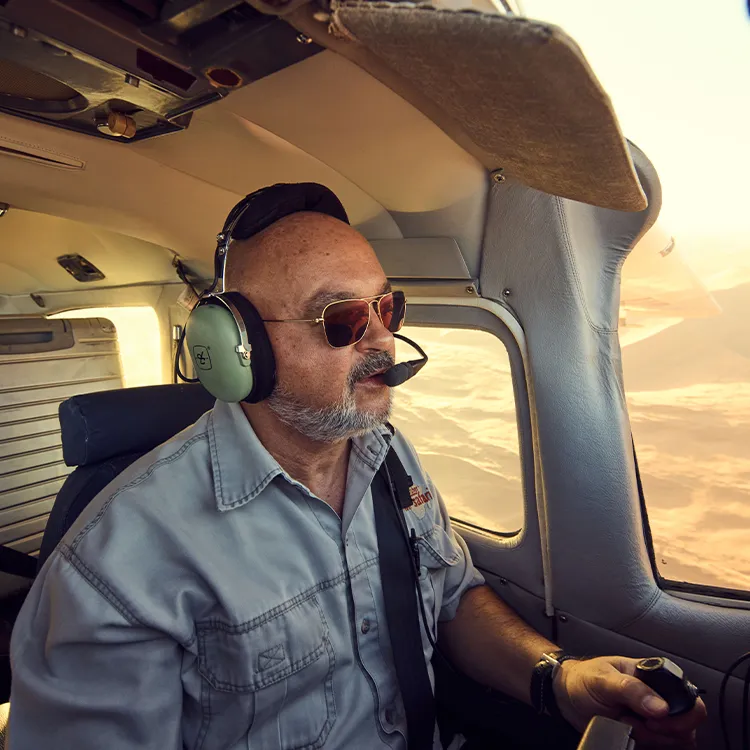
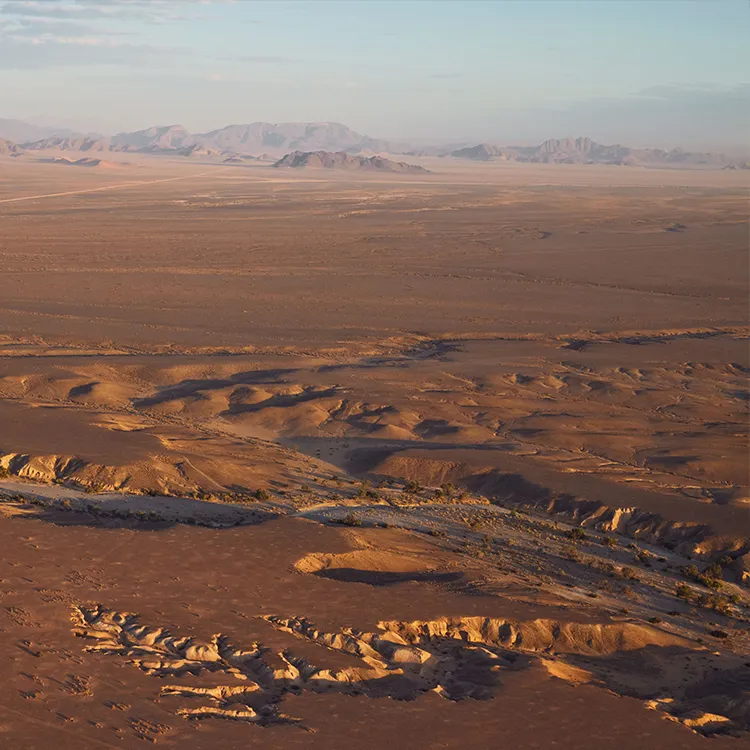
Oliver Braun effectue un virage et dirige le Cessna vers le sud-ouest. Rapidement un sentiment de liberté nous envahit : nous avons sous les yeux une Afrique totalement préservée.
La Namibie est également appelée « Land of open spaces » (pays des grands espaces) et il n’est pas nécessaire de parcourir de grandes distances pour comprendre l’origine de ce surnom. Derrière le Gamsberg se dessinent les Monts Hakos, un paysage brun et aride sillonné de plateaux rocailleux et d’éboulis de couleur claire. Quelques villages sont encore visibles, les routes s’étirant comme de fines lignes vers l’horizon. Mais rapidement les Monts Naukfluft apparaissent en contrebas, et un peu plus au sud-est, le Tsondab, une rivière asséchée, traçant une longue cicatrice dans l’étendue ocre. Un flux thermique se forme dans le ciel, secouant brièvement le Cessna. Oliver Braun reste d’un calme olympien. Il connaît par cœur chaque route du désert, chaque point d’eau et chaque repère important. Il semble même connaître chaque trou d’air.
Après vingt minutes de vol, le Grand Escarpement approche. Il marque l’entrée dans le désert central du Namib, un no man’s land. Le regard se perd dans l’immensité. Peu importe où nos yeux se posent, la terre est nue : flancs brun rougeâtre, salines arides, plaines sillonnées de motifs sauvages. Ce territoire a toujours été le royaume des éléphants du désert, des geckos des sables, des porcs-épics et des serpents.
Et c’est précisément cela qui a attiré l’imprimeur d’Oberursel ici. De la nature à profusion, un lieu pratiquement inhabité, un climat sec, des animaux. Oliver Braun tend son bras vers le tableau de bord, caressant l’étendue du plat de la main. Il jette un coup d’œil à travers ses lunettes de soleil aviateur et nous lance « Vous voyez ce que je veux dire ? »
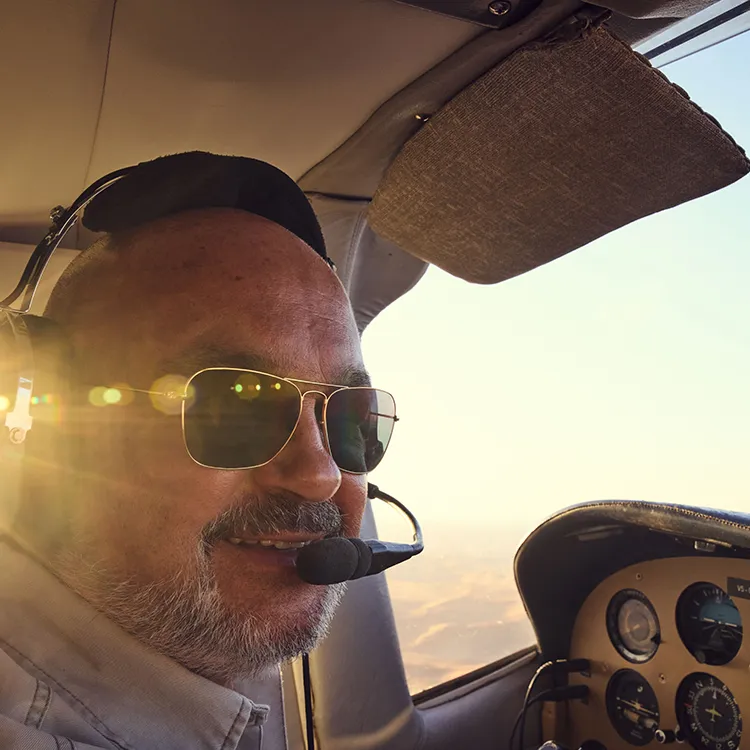
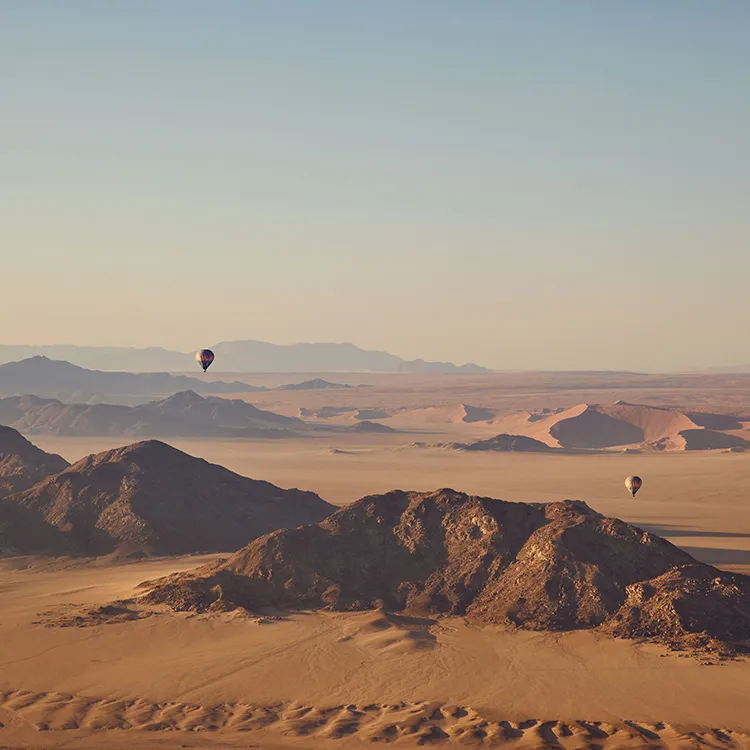
La Namibie est le deuxième pays le moins peuplé au monde. Seule la Mongolie est plus déserte et plus étendue. Sous les ailes s’étend une zone qui va de l’Angola au nord jusqu’à l’Afrique du Sud. Un espace deux fois et demie plus grand que l’Allemagne, mais peuplé de seulement 2,5 millions d’habitants. Ces proportions donnent une rare sensation d’espace et de temps. Le petit Cessna survole une planète restée largement intacte.
Il n’y a pas un nuage dans le ciel lorsqu’au bout d’une heure, Oliver Braun accélère et entame sa descente. D’une altitude de plus de 2.400 mètres, le Cessna se dirige vers une chaîne de montagnes qui se dresse tel un amas de cônes délicats au-dessus d’une plaine. « La piste d’atterrissage se trouve derrière », dit Oliver Braun. « On atterrit dans cinq minutes. »
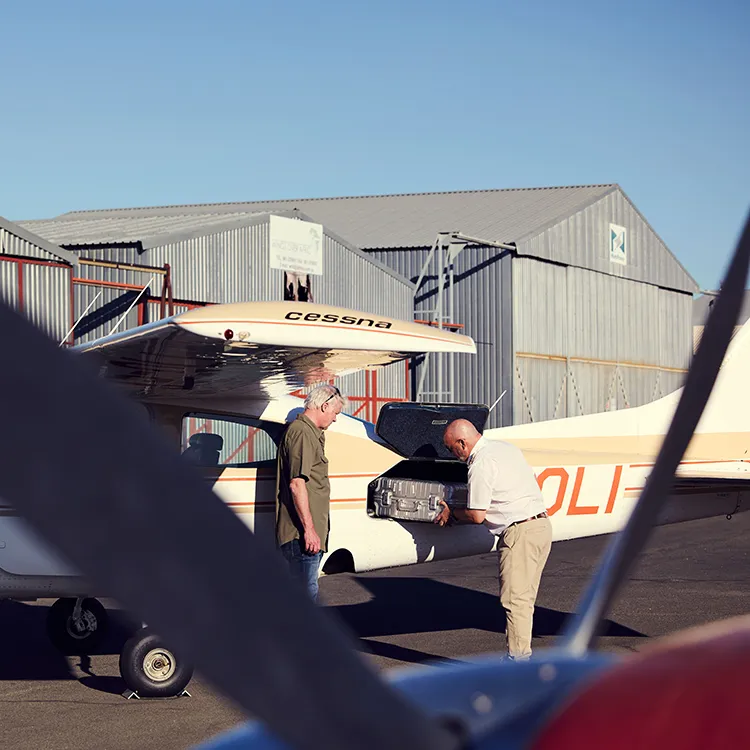
Aucune tour ni aucun terminal en vue. L’aérodrome situé en contrebas dans la vallée brûlante se compose simplement de quelques hangars et d’une piste d’atterrissage étroite. Seul le vent souffle à travers une grille rouillée et trois antilopes courent vers l’ouest.
Encore un virage, et la piste apparaît. Oliver Braun pose son avion en douceur, roule jusqu’à l’arrêt, puis s’immobilise. Le Cessna est silencieux. Un souffle d’air chaud du désert balaie l’avion. Le soleil est à son zénith. « Bienvenue dans le Namib », dit Oliver.
Le fait qu’un imprimeur allemand devienne un pilote de brousse en plein cœur de la Namibie sauvage n’est pas dû au hasard. Pour ce faire, Oliver Braun n’a pas seulement dû apprendre à voler. Il a également dû prendre un virage à 180 degrés.
Le soir au camp, il s’assoit devant sa tente, dans le sable, au coin du feu. « Tu vois ces oryx là-bas ? » demande-t-il ? « Ils sont bien trop maigres, on peut compter leurs côtes. Ils savent que sans eau et sans nourriture des mois difficiles les attendent. Ils se déplacent très lentement. »
Oliver Braun, qui maîtrisait autrefois l’art du gaufrage et de la typographie, est aujourd’hui un spécialiste dans d’autres domaines. Au fil des années, il est non seulement devenu pilote de brousse, mais aussi expert en vol en Namibie. Et il nous raconte ensuite son histoire. Passer d’imprimeur dans une ville de Hesse à pilote de brousse en Afrique n’a en effet rien de banal.
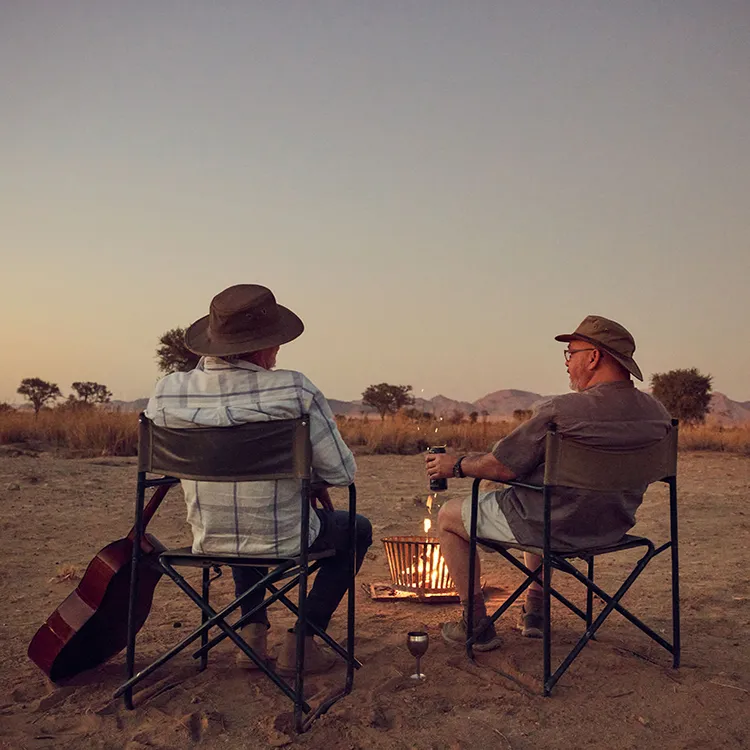
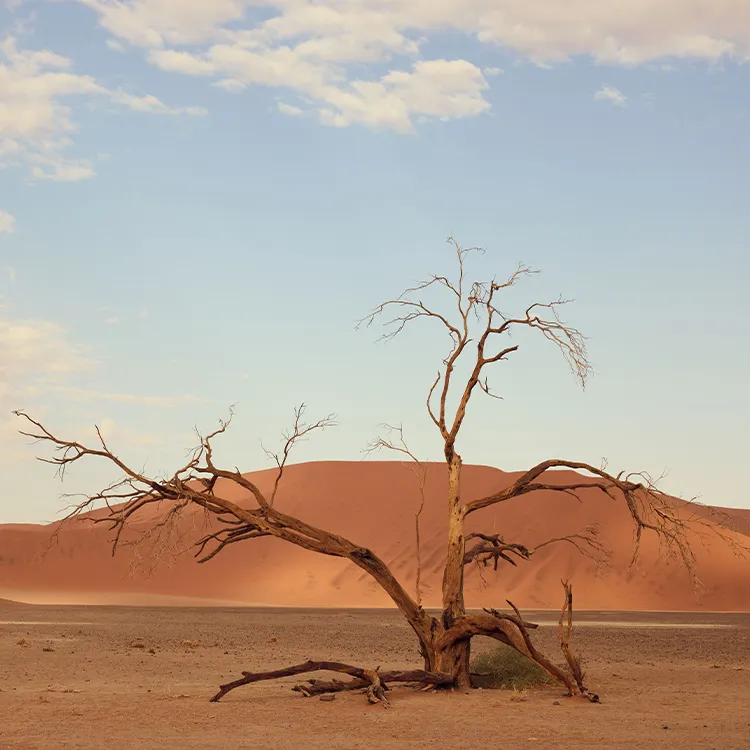
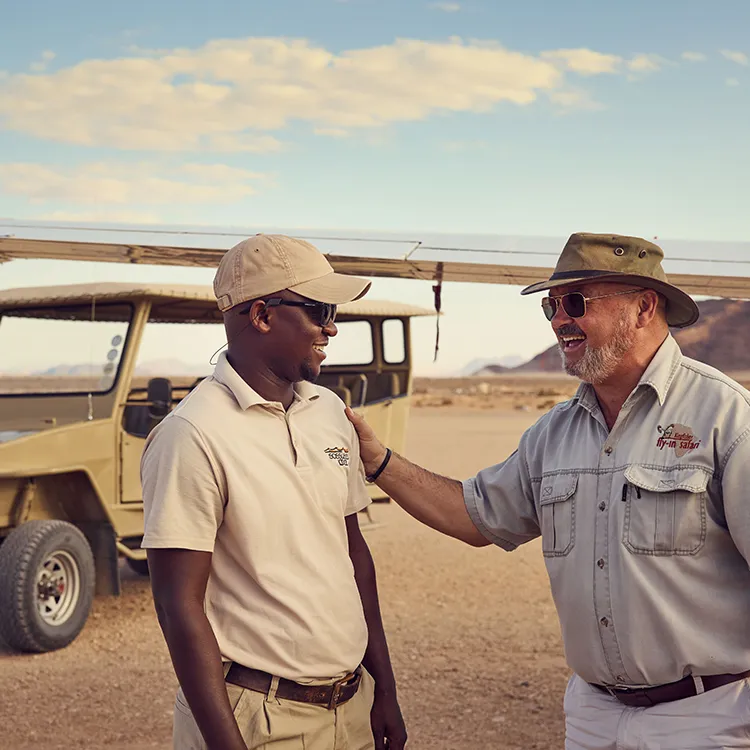

Une idée audacieuse et folle, mais tout s’est très vite mis en place et Oliver Braun a eu le courage de franchir le cap. En mai 2000, il a rangé son porte-documents, vendu tous les biens qu’il possédait en Allemagne et s’est envolé pour l’Afrique du Sud. Le lendemain, il commençait sa formation de pilote.
Il a suivi une formation intensive de pilote, obtenu sa licence de pilote privé (PPL), puis sa licence de pilote professionnel (CPL). Au lieu de collecter des points à la caisse du supermarché, il a commencé à cumuler des heures de vol : décollage, atterrissage, navigation, vol de nuit, listes de contrôle, procédures.
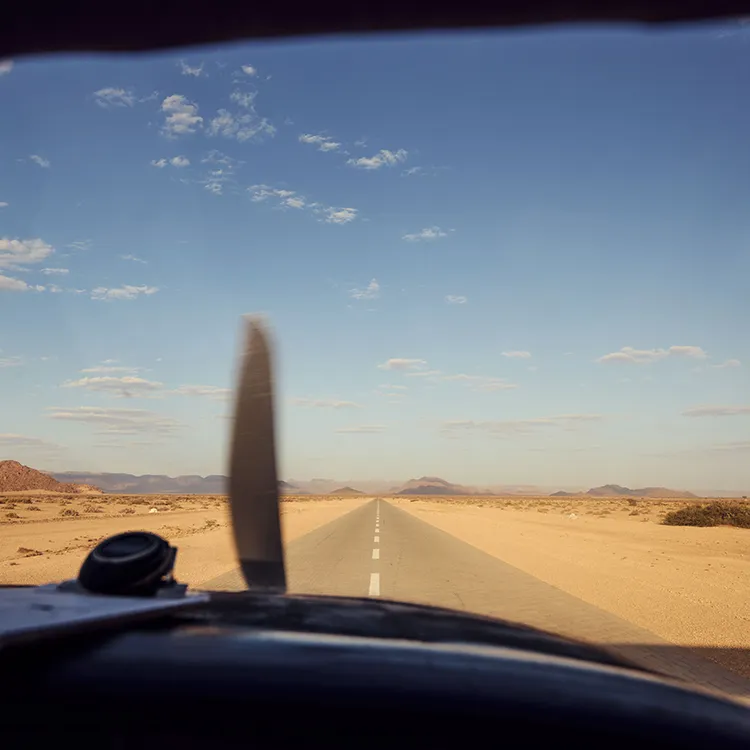
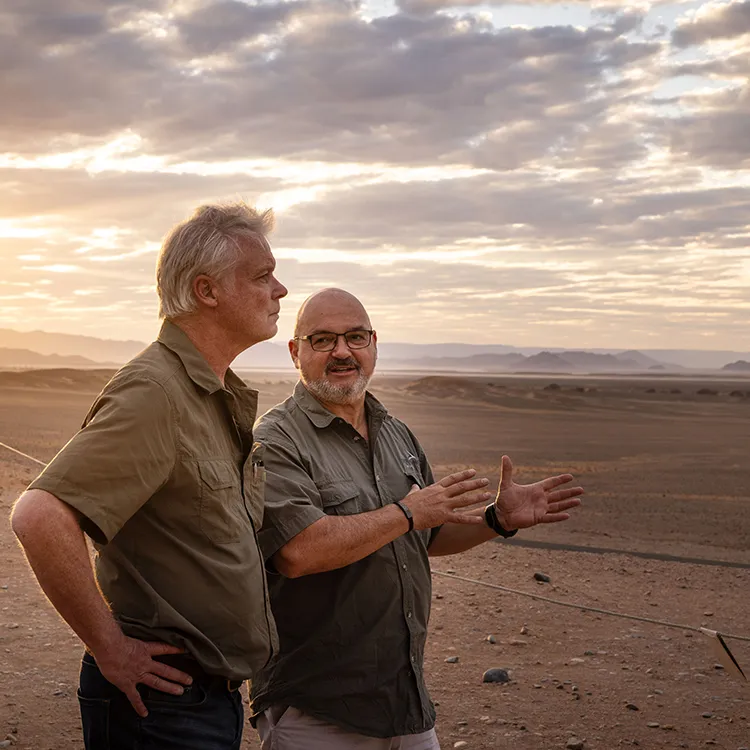
Encore quelques virages à maîtriser et puis terminé ! Oliver Braun était bel et bien devenu pilote. Il traversa ensuite le sud de l’Afrique au volant d’une vieille VW et parcourut 3.000 kilomètres pour se rendre en Namibie. À l’époque on y recherchait activement des pilotes.
La suite, nous la connaissons. C’est son histoire. Il a postulé et s’est rapidement retrouvé à survoler l’Afrique. Chaque jour, chaque semaine, chaque mois, il survolait le Kalahari pour atterrir dans des lodges isolés. Il a emmené des clients jusqu’en Angola et au Botswana. À un moment donné, il a acquis son propre avion, l’Oscar Lima India. Cela fait à présent 24 ans qu’Oliver Braun est en Afrique et il a cumulé plus de 5.800 heures de vol. Oliver Braun poursuit : « Je ne regrette aucunement ma décision. Je me suis construit une toute nouvelle vie et j’adore voler ! »
Et il est également sûr d’une autre chose : aucun petit appareil ne viendra lui reprendre son job d’un coup de baguette magique, car les ordinateurs n’ont pas d’ailes.
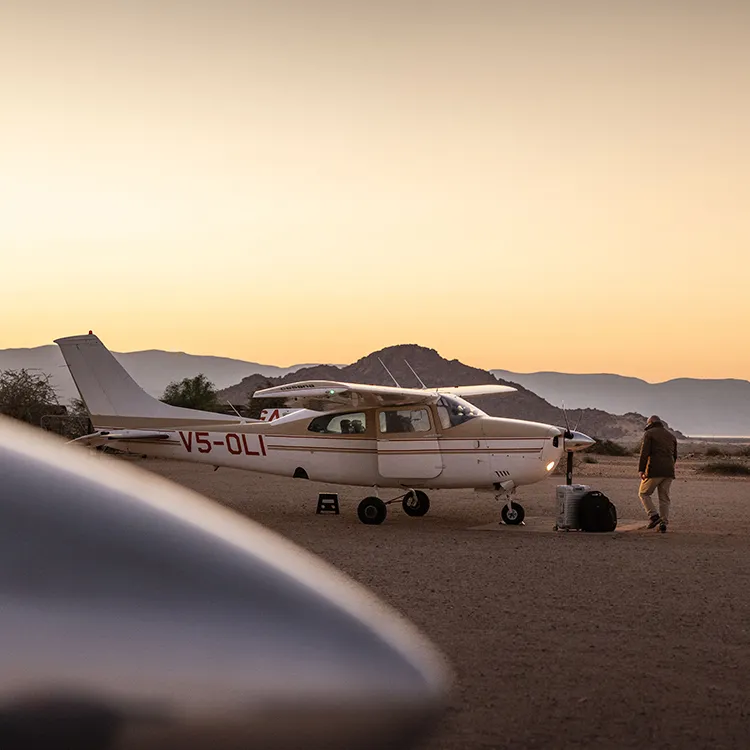
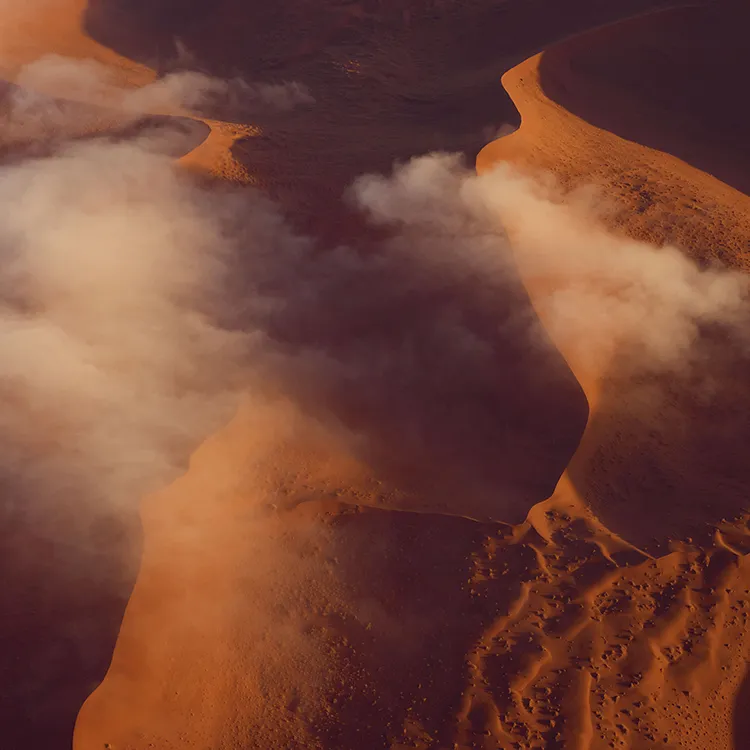
Moins d’une minute plus tard, un tout nouveau monde s’ouvre sous l’avion. Un labyrinthe de dunes composées et isolées, transformées en arches, croissants et paraboles sablonneuses. Tel un relief sculpté par le vent, le désert baigne dans une lumière chaude.
Oliver Braun effectue un virage. Du haut du ciel, l’envie nous prend de caresser ces dunes de la main et de s’y perdre. Le regard balaie la mer de sable. Partout des lignes et des formes douces à perte de vue, telles que vous n’en avez jamais vu auparavant.
Même si Oliver Braun connaît déjà ce décor, il s’émerveille lors de chaque vol. « C’est pour cela que j’aime piloter en Afrique », ajoute-t-il. « La nature est époustouflante. On survole jour après jour de vastes étendues désertes qui nous laissent bouche bée. »
Et en plus, il y a peu d’avions qui volent ici. Donc lorsque l’on veut effectuer un virage, il suffit de le faire.

Auteur

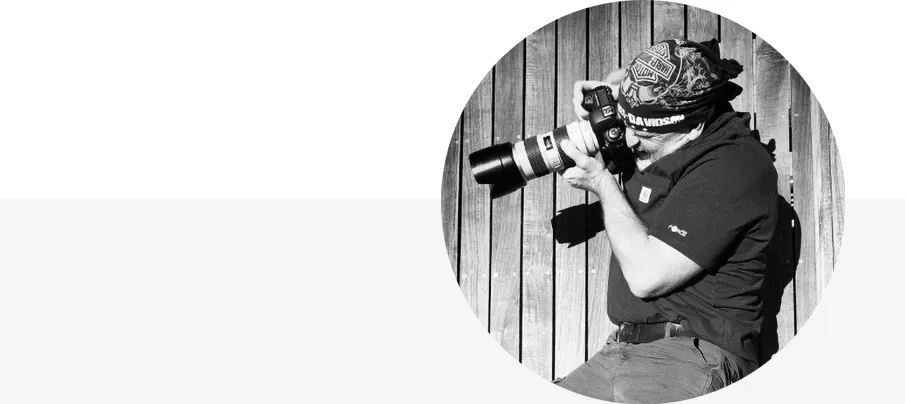
Photographe


Aluminium Collection
Alliée de voyage

Parcourez le monde avec nous
